Trace Fossils (Bioturbation)
| Lots of critters roam the oceans, lakes, and land surfaces of this planet. It won't surprise you that many of these animals disturb the sediment by leaving behind footprints, trails, burrows, and feeding traces. A surprising number and diversity of such traces are preserved as trace fossils in the sedimentary record. Since they are so common in especially marine sedimentary rocks, it is worth showing you what they look like. |
|
These are two large dinosaur footprints.
Vertebrate footprints are relatively rare, but if you know you are in rocks deposited on land, you should keep your eyes open! I once found a trail (foot prints plus faint tail drag) left by a cat-sized reptile on a large slab of red sandstone on some cliffs outside of Las Vegas.
|
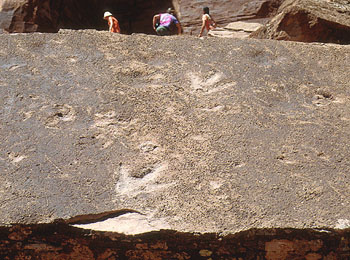
|
|
These horizontal traces were left on the bottom of an ancient lake by some critter who was probably sifting through the mud for food much like earthworms do.
Death Valley, CA
|
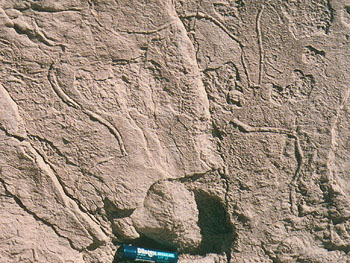
|
|
A fairly large critter spent some time bulldozing through the sediment on a sea floor some 530 million years ago.
This photo was taken in the Poleta Folds area near Bishop, CA.
|
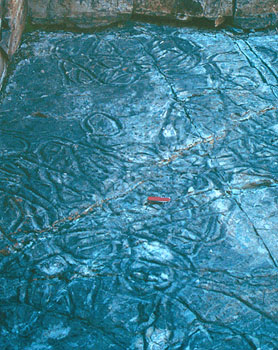
|
|
While the previous two were strictly horizontal traces, this is more of a 3-D network of burrows. The underside of a rock ledge often reveals cool stuff.
|
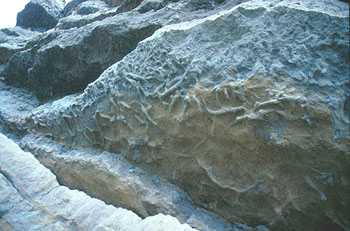
|
|
This is a very dense, 3-D network of fairly large burrows. Note the hammer for scale. Also note that without a wooden or rubber handle, actually using this hammer on rock involves pain.
Ravenscar Group (Jurassic), Yorkshire, England
|
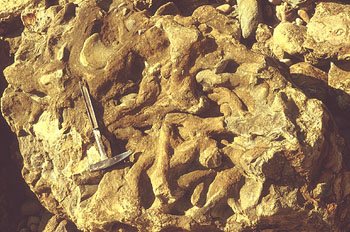
|
|

![]()




